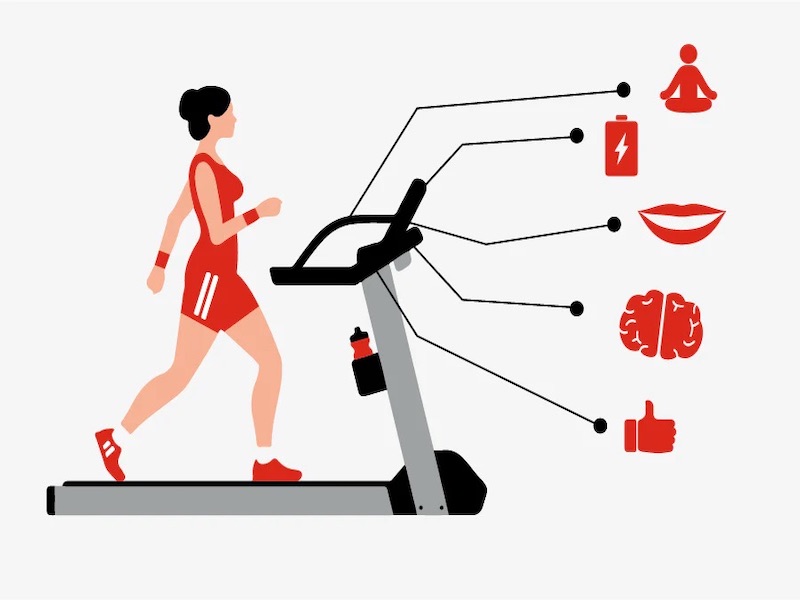
Quick weight loss diet plan – Tips and notes for beginners
Losing weight quickly is the desire of many people. However, applying unscientific methods can be harmful to health. Below, Evaworlds will reveal to you some tips and notes to help you plan to lose weight quickly, safely, and effectively. Let’s explore a quick weight loss diet plan now!
Step 1: Determine your weight loss goal
- Set specific, realistic, and achievable goals: Determine how many kilograms you want to lose and how long it will take. You need to make sure your goals are realistic and not too far-fetched to avoid frustration and fatigue. For example, losing 0.5 – 1 kg per week is a reasonable and safe goal.
- Break your goals into smaller steps: Instead of just setting an end goal, break it down into short-term milestones. This makes it easy to track your progress and stay motivated. For example, if your ultimate goal is to lose 10 kg in 5 months, you can divide it into milestones such as losing 2 kg per month.

Benefits of clearly defining goals:
- Stay motivated: Short-term goals help you see results quickly, thereby keeping your motivation going.
- Easy to track: You can track progress more easily when goals are broken down. Therefore, you will easily adjust your plan if needed.
- Create patience and perseverance: Seeing each step of progress clearly will help you persevere and have more motivation to not give up halfway.
See more:
- Insulin resistance diet: Benefits and how to build an extremely effective diet
- The gluten-free diet: Benefits, foods and menu planning
- What is a high-protein diet? Benefits and suggestions for 15+ protein-rich foods
Step 2: Choose the right diet
- Reduce your daily calorie intake: To lose weight effectively, you need to build a calorie-deficit diet. The most reasonable way to lose weight is to reduce your daily calorie intake by 500 to 1000 calories compared to your body’s maintenance calorie needs. If maintained, you can easily lose 0.5 to 1 kg per week, a safe and sustainable way to lose weight.
- Prioritize foods rich in fiber, protein, and vitamins: Choose foods rich in fiber such as green vegetables, fruits, nuts, and whole grains. Foods rich in protein such as lean meat, fish, eggs, and beans. These foods help your body feel full longer and help build muscle. Besides, add foods rich in vitamins to provide adequate nutrients for the body.
- Limit processed foods, sweets, and carbonated drinks: Processed foods often contain a lot of calories, bad fats, sugar, and salt. These are all substances that are not good for the weight loss process. So you need to consume sweets and carbonated drinks. The reason is that they contain a lot of sugar and empty calories, providing no nutritional value.
- Drink enough water every day: Water plays an important role in the weight loss process. Every day, you should maintain 2-3 liters of water a day to serve your metabolic needs, reduce hunger, and keep your body in the best condition. Water also helps remove toxins from the body, improving skin and overall health.
Step 3: Exercise regularly
Combine cardio exercises and strength exercises
To achieve the best weight loss results, combine cardio exercises such as jogging, swimming, cycling, or jumping rope with strength exercises such as weight lifting, yoga, or pilates. Cardio burns calories quickly, while strength training helps build and maintain muscle and increase metabolism.

Exercise at least 30 minutes a day, 5 days a week
To maintain consistency and achieve good results, you should exercise for at least 30 minutes a day, 5 days a week. With this exercise schedule, the body can burn calories regularly and improve overall health.
Choose exercises that suit your interests and abilities
To stay motivated and avoid boredom, choose exercises that you enjoy and that suit your abilities. For example, if you like dancing, try Zumba or dance fitness classes. If you enjoy being outdoors, try walking, jogging or cycling. Choosing your favorite exercises will help you maintain a long-term and effective exercise routine.
Benefits of exercise:
- Improve cardiovascular health: Cardio exercises help improve cardiovascular health, reducing the risk of cardiovascular diseases.
- Enhance muscle strength and endurance: Strength exercises help build muscle, increase endurance and stamina.
- Reduce stress and improve mental health: Regular exercise helps reduce stress, anxiety and improve mood.
- Boost metabolism: The combination of cardio and strength helps boost metabolism, burning calories more effectively than when you’re not exercising.
See more:
- Gout diet: Menu suggestions for a nutritious week
- What is the MIND diet? Benefits, foods to eat or not to eat, menu suggestions
- Mayo Clinic Diet: Benefits and buying guide full and detailed
Step 4: Change living habits
Get enough sleep 7-8 hours every night
Adequate and quality sleep is an important factor that helps the body recover and maintain health. Getting enough sleep helps balance hormones, reduces hunger and cravings, and supports weight loss. You should try to maintain a regular sleep schedule, going to bed and waking up at the same time every day.
Limit tension and stress
Stress and tension are also causes of uncontrolled eating and weight gain. Find ways to reduce stress through activities such as meditation, yoga, exercise, or participating in favorite recreational activities. It’s important to remember to maintain a healthy and positive living environment to help reduce stress.
Avoid staying up late and using your phone before bed
Staying up late and using the phone before bed can disrupt sleep and negatively affect your health. Blue light from phones causes a loss of sleep quality, making you feel tired the next day. Try to avoid using your phone at least 1 hour before going to bed and create a quiet, comfortable space to easily fall asleep.
Step 5: Monitor progress and adjust plans
Keep a food and exercise diary: Recording your daily meals and exercise activities will help you easily track your weight loss progress. A food and exercise diary gives you a detailed view of your calorie intake and expenditure. At that time, what habits did you realize that needed adjusting? In addition, it is also a source of motivation when you see progress day by day.

Adjust the plan when necessary:
The weight loss process doesn’t always go smoothly and can be challenging. The important thing to remember is to be flexible and willing to adjust your plan based on your health status and weight loss effectiveness. If you feel like you’re not getting the results you want, reconsider your diet, exercise, and lifestyle habits. You may need to change the type of exercise, increase intensity, or change your diet to be more suitable.
Step 6: Consult your doctor or nutritionist
Consult your doctor if you have health problems
Before starting any weight loss plan, if you have any health concerns such as heart disease, diabetes, or other chronic diseases, consult your doctor. Your doctor will examine your overall health and provide specific recommendations and instructions to ensure that your weight loss plan is safe and effective.
Thanks to support from nutrition experts
A nutritionist can help you develop a diet tailored to your individual needs, ensuring that you are getting all the nutrients you need as you lose weight. They can also provide specific advice on food choices, meal planning, and how to maintain a healthy lifestyle long term.













